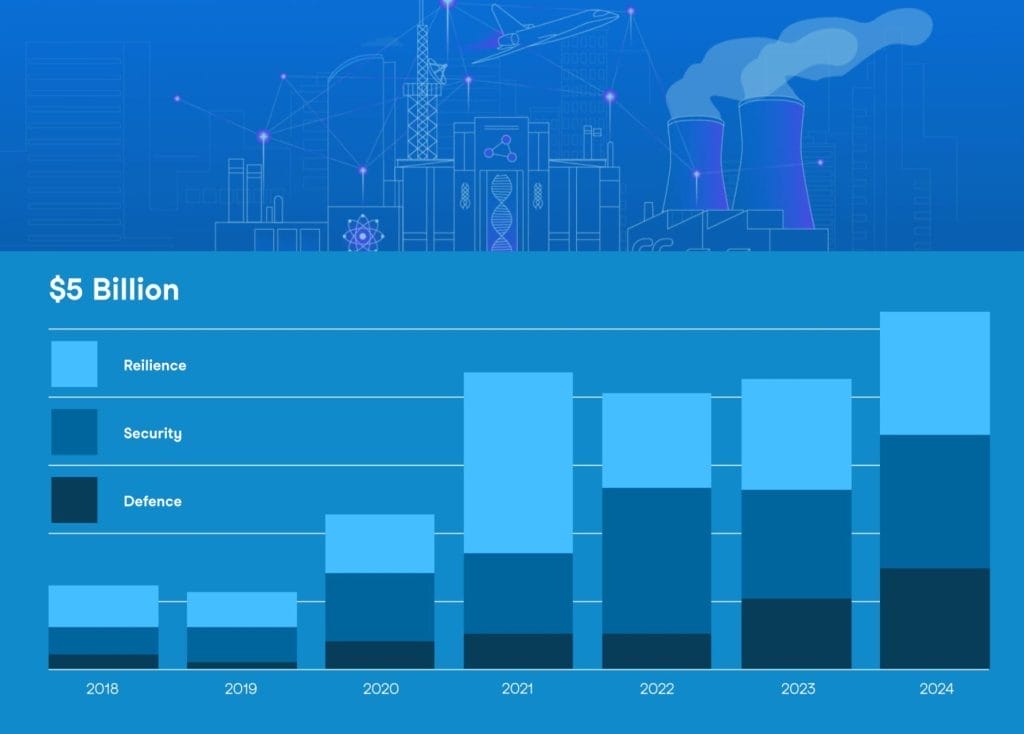September 19, 2025
The NATO Innovation Fund Invests in Kreios Space to bring satellites closer to Earth and Europe closer to strategic autonomy

- Led by the NATO Innovation Fund and JOIN Capital, this financing marks the largest-ever European round in Very Low Earth Orbit technology and the NATO Innovation Fund’s first direct investment in Spain
- Kreios’ breakthrough technology will unlock Europe’s surveillance capabilities and improve the region’s supranational communications infrastructure
A new generation of satellites is coming closer to Earth than ever before — and Europe wants to be the one to build it. Spanish startup Kreios Space, whose breakthrough technology allows satellites to operate in Very Low Earth Orbit (VLEO) – a region once considered unreachable, announces the largest ever European round in this space.
By flying between 150 and 400 kilometers above the planet, these satellites can capture images three times sharper than today’s systems and deliver broadband direct-to-device connectivity, a capability not available today. That promise has drawn €8 million in Seed funding led by the NATO Innovation Fund and JOIN Capital, alongside Grow Venture Partners, Xesgalicia, and Tasivia Global.
Founded in 2021, Kreios is developing VLEO satellites enabled by their proprietary Air-Breathing Electric Propulsion (ABEP) system, that makes it possible for satellites to operate at an altitude of around 200 kilometers from Earth — an altitude once considered impossible because of atmospheric drag. By “breathing” the atmosphere as fuel, Kreios’ satellites can stay aloft for years instead of days, unlocking a region of space with massive implications for defence, connectivity, and sovereignty.
VLEO satellites capture images with threefold the clarity of today’s constellations, enhancing everything from environmental monitoring and disaster response to critical infrastructure protection. Their proximity to Earth radically improves the link budget and allows broadband direct-to-device communications without bulky antennas, paving the way for truly global, resilient connectivity. For Europe and NATO, control of this technology strengthens operational independence, reduces reliance on US incumbents, and underpins ambitions to build sovereign space capabilities.

We’re not just building satellites, we’re opening up an orbit that was written off as impossible. Very Low Earth Orbit gives Europe sharper eyes, faster connectivity, and greater independence in space. With this funding, we’ll prove the technology in orbit and make VLEO a domain where Europe leads, not follows.
The new funding will finance the company’s opening duo of test satellites, including the world’s first in-orbit demonstration of an ABEP engine. Kreios aims to expand toward commercial deployment and dedicated constellations for Earth observation and direct-to-device communications.
Headquartered in Vigo on Spain’s northwest coast, the company has grown from a lab project into a 17-person team with backing from European investors and advisors with pedigrees from Thales, JAXA, and ESA. With this Seed round, Kreios is positioned to become the European leader in VLEO — an orbit that could define the balance of commercial and strategic power in space for decades.

Kreios’ technology marks a decisive leap into the new frontier of Very Low Earth Orbit. By bringing satellites closer to Earth, they enable high-resolution imaging and direct-to-device connectivity at a level that was previously unfeasible – a critical security capability for Europe. This unlocks new possibilities in surveillance, tactical communications, and highly mobile satellites. Marking the NATO Innovation Fund’s first investment in Spain, Kreios is not just multiplying satellite performance, they are redrawing the boundaries of space itself – opening a frontier rich in both strategic value and commercial opportunity
Related articles

February 12, 2025

October 14, 2025


